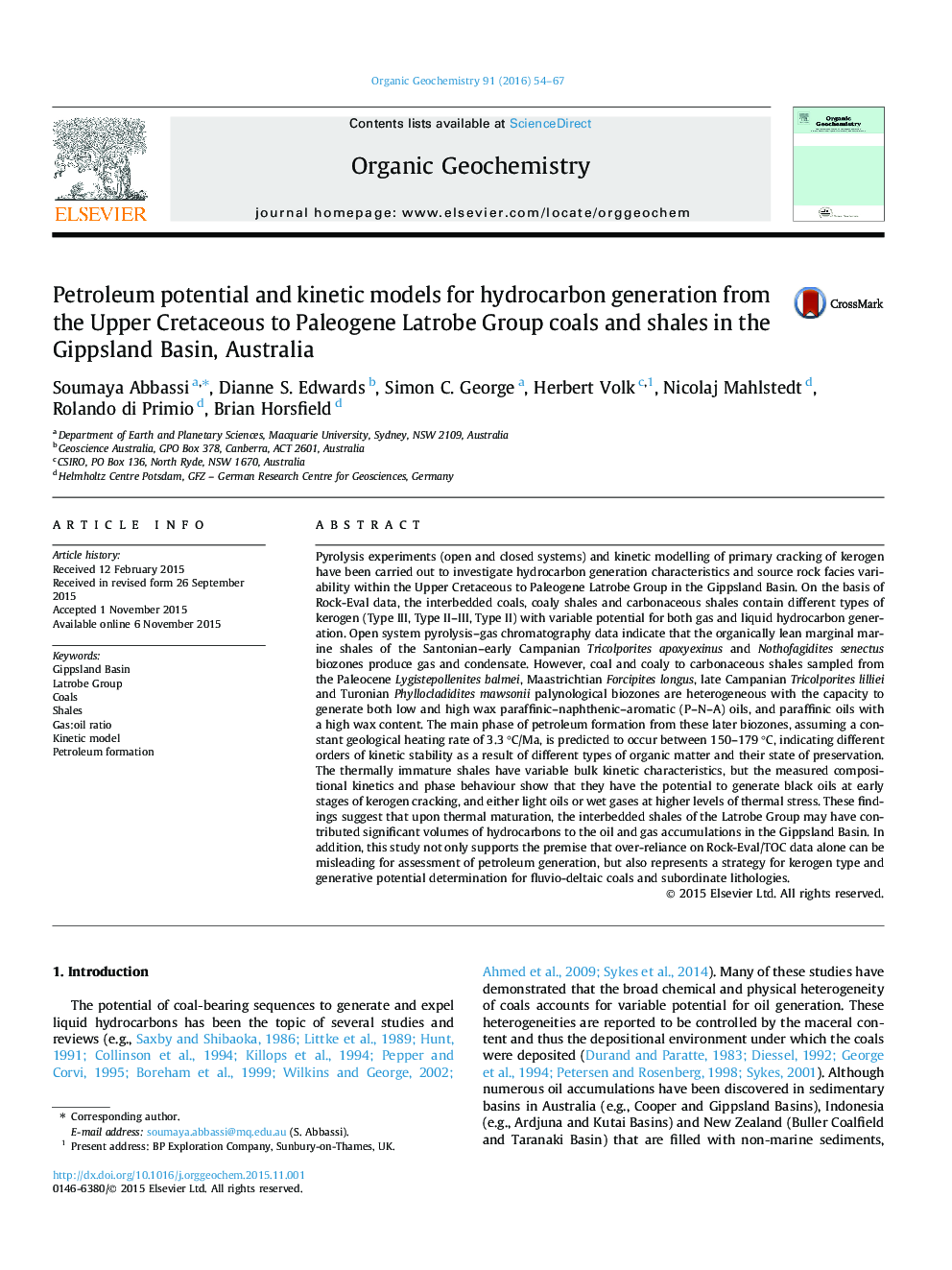| کد مقاله | کد نشریه | سال انتشار | مقاله انگلیسی | نسخه تمام متن |
|---|---|---|---|---|
| 5161434 | 1502272 | 2016 | 14 صفحه PDF | دانلود رایگان |
عنوان انگلیسی مقاله ISI
Petroleum potential and kinetic models for hydrocarbon generation from the Upper Cretaceous to Paleogene Latrobe Group coals and shales in the Gippsland Basin, Australia
دانلود مقاله + سفارش ترجمه
دانلود مقاله ISI انگلیسی
رایگان برای ایرانیان
موضوعات مرتبط
مهندسی و علوم پایه
شیمی
شیمی آلی
پیش نمایش صفحه اول مقاله

چکیده انگلیسی
Pyrolysis experiments (open and closed systems) and kinetic modelling of primary cracking of kerogen have been carried out to investigate hydrocarbon generation characteristics and source rock facies variability within the Upper Cretaceous to Paleogene Latrobe Group in the Gippsland Basin. On the basis of Rock-Eval data, the interbedded coals, coaly shales and carbonaceous shales contain different types of kerogen (Type III, Type II-III, Type II) with variable potential for both gas and liquid hydrocarbon generation. Open system pyrolysis-gas chromatography data indicate that the organically lean marginal marine shales of the Santonian-early Campanian Tricolporites apoxyexinus and Nothofagidites senectus biozones produce gas and condensate. However, coal and coaly to carbonaceous shales sampled from the Paleocene Lygistepollenites balmei, Maastrichtian Forcipites longus, late Campanian Tricolporites lilliei and Turonian Phyllocladidites mawsonii palynological biozones are heterogeneous with the capacity to generate both low and high wax paraffinic-naphthenic-aromatic (P-N-A) oils, and paraffinic oils with a high wax content. The main phase of petroleum formation from these later biozones, assuming a constant geological heating rate of 3.3 °C/Ma, is predicted to occur between 150-179 °C, indicating different orders of kinetic stability as a result of different types of organic matter and their state of preservation. The thermally immature shales have variable bulk kinetic characteristics, but the measured compositional kinetics and phase behaviour show that they have the potential to generate black oils at early stages of kerogen cracking, and either light oils or wet gases at higher levels of thermal stress. These findings suggest that upon thermal maturation, the interbedded shales of the Latrobe Group may have contributed significant volumes of hydrocarbons to the oil and gas accumulations in the Gippsland Basin. In addition, this study not only supports the premise that over-reliance on Rock-Eval/TOC data alone can be misleading for assessment of petroleum generation, but also represents a strategy for kerogen type and generative potential determination for fluvio-deltaic coals and subordinate lithologies.
ناشر
Database: Elsevier - ScienceDirect (ساینس دایرکت)
Journal: Organic Geochemistry - Volume 91, January 2016, Pages 54-67
Journal: Organic Geochemistry - Volume 91, January 2016, Pages 54-67
نویسندگان
Soumaya Abbassi, Dianne S. Edwards, Simon C. George, Herbert Volk, Nicolaj Mahlstedt, Rolando di Primio, Brian Horsfield,